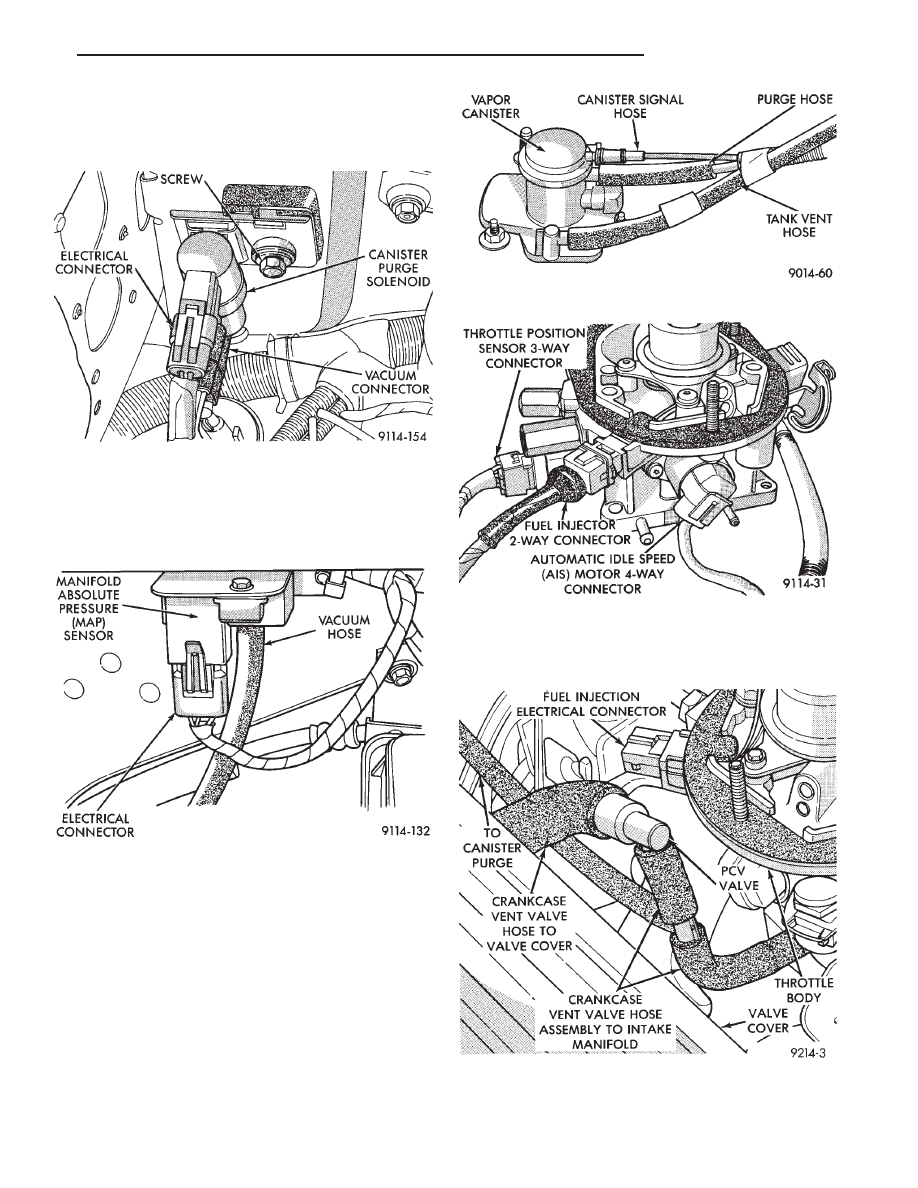Chrysler Town & Country/Voyager, Dodge Caravan, Plymouth Voyager. Manual - part 22

(2) Verify that the electrical connector is attached to
the Canister Purge Solenoid (Fig. 3).
(3) Verify that vacuum connection at Canister Purge
Solenoid is secure and not leaking.
(4) Verify the harness connector is attached to the
MAP sensor (Fig. 4).
(5) Verify manifold absolute pressure sensor vacuum
hose is attached at MAP sensor (Fig. 4).
(6) Verify that alternator wiring and belt are cor-
rectly installed and tightened.
(7) Verify that hoses are securely attached to vapor
canister (Fig. 5).
(8) Verify that the throttle body wiring harness is
connected to main harness.
(9) Verify the harness connector is attached to AIS
motor (Fig. 6).
(10) Verify the harness connector is attached to the
throttle position sensor (Fig. 6).
(11) Verify the harness connector is attached to the
fuel injector (Fig. 6).
(12) Verify the hose from PCV valve is securely
attached to the intake manifold vacuum port (Fig. 7).
Fig. 3 Canister Purge Solenoid
Fig. 4 Manifold Absolute Pressure (MAP) Sensor
Location
Fig. 5 Vapor Canister
Fig. 6 Throttle Body Wiring Connections
Fig. 7 Vacuum Hose from Intake Manifold to PCV
Valve
.
FUEL SYSTEM
14 - 35